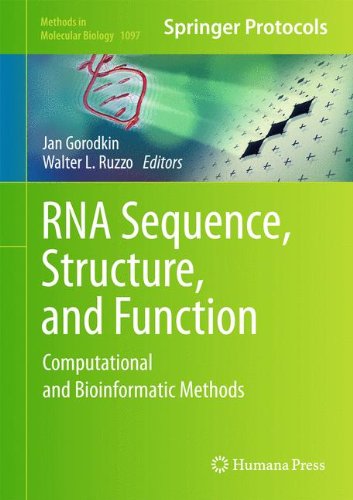RNA Sequence, Structure, and Function: Computational and Bioinformatic Methods 2014
دانلود کتاب پزشکی توالی RNA، ساختار و عملکرد: روش های محاسباتی و بیوانفورماتیک
| نویسنده |
Jan Gorodkin, Walter L. Ruzzo |
|---|
| تعداد صفحهها |
533 |
|---|---|
| نوع فایل |
|
| حجم |
12 Mb |
| سال انتشار |
2014 |
89,000 تومان
وجود ژنهایی برای مولکولهای RNA غیر کدکننده پروتئین (ncRNAs) از دهه 1950 به رسمیت شناخته شد، اما تا همین اواخر، جدای از RNA ریبوزومی و ژنهای جابهجایی، بیشتر تمرکز بر روی ژنهای کدکننده پروتئین بود. با این حال، یک سری طولانی از اکتشافات شگفتانگیز، از توانایی RNA برای انجام یک عملکرد کاتالیزوری، تا کشف ریبوسوئیچها، microRNA ها و سایر تنظیمکنندههای ریبوزومی که وظایف حیاتی را در اساساً در همه موجودات انجام میدهند، علاقه فزایندهای به این جزء اولیه ایجاد کرده است. اقیانوس زیستی با این حال، ویژگیهای ساختاری و محدودیتهای تکاملی روی مولکولهای RNA بسیار متفاوت از پروتئینها است، که توسعه مجموعهای کاملاً جدید از ابزارهای انفورماتیک را برای مقابله با این چالشها ضروری میکند. در توالییابی RNA، ساختار و عملکرد: روشهای محاسباتی و بیوانفورماتیک، محققان خبره در این زمینه بخش مهم و مرتبطی از این روشها را از منظر عملی و محاسباتی/الگوریتمی توصیف میکنند. تمرکز در هر دو جهت به زیست شناس علاقه مند به یادگیری بیشتر در مورد بیوانفورماتیک RNA و دانشمند بیوانفورماتیک علاقه مند به جنبه های دقیق تر الگوریتم ها می پردازد. فصلها که در قالب مجموعههای روشها در زیستشناسی مولکولی نوشته شدهاند، شامل انواع توضیحات مفصل و نکات اجرایی است که برای دستیابی به بهترین نتایج حیاتی است.
جامع و شهودی، توالی یابی، ساختار و عملکرد RNA: روش های محاسباتی و بیوانفورماتیک به دانشمندان کمک می کند تا روش ها و اصول کلیدی بیوانفورماتیک را در DNA riba مطالعه کنند. .
The existence of genes for RNA molecules not coding for proteins (ncRNAs) has been recognized since the 1950's, but until recently, aside from the critically important ribosomal and transfer RNA genes, most focus has been on protein coding genes. However, a long series of striking discoveries, from RNA's ability to carry out catalytic function, to discovery of riboswitches, microRNAs and other ribo-regulators performing critical tasks in essentially all living organisms, has created a burgeoning interest in this primordial component of the biosphere. However, the structural characteristics and evolutionary constraints on RNA molecules are very different from those of proteins, necessitating development of a completely new suite of informatic tools to address these challenges. In RNA Sequence, Structure, Function: Computational and Bioinformatic Methods, expert researchers in the field describe a substantial and relevant fraction of these methodologies from both practical and computational/algorithmic perspectives. Focusing on both of these directions addresses both the biologist interested in knowing more about RNA bioinformatics as well as the bioinformaticist interested in more detailed aspects of the algorithms. Written in the highly successful Methods in Molecular Biology series format, the chapters include the kind of detailed description and implementation advice that is crucial for getting optimal results.
Thorough and intuitive, RNA Sequence, Structure, Function: Computational and Bioinformatic Methods aids scientists in continuing to study key methods and principles of RNA bioinformatics.



